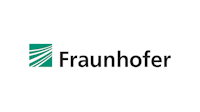Institute for Renewable Energy - Projects - IEA-SHC Task 56
IEA-SHC Task 56
IEA-SHC Task 56 - Building Integrated Solar Envelope Systems for HVAC and Lighting
- Deutsch
- English
- Italiano
- Project duration: -
- Project status: finished
- Funding: Public institutions (Other projects /Project)
- Website: http://task56.iea-shc.org/
- Institute: Institute for Renewable Energy
This Task will focus on the critical analysis, simulation, laboratory test and onsite monitoring of envelope systems entailing elements that use and/or control incident solar energy, having one or more of the following uses:
- To deliver renewable thermal or/and electric energy to the systems providing heating, cooling and ventilation to buildings
- To reduce heating and cooling demands of buildings, while controlling daylight
In the residential sector, solar thermal and PV systems are typically mounted on building roofs with limited attempt to incorporate them into the building envelope, creating aesthetic drawbacks and space availability problems. On the contrary, the use of facades is highly unexplored. Daylight control is delegated to the individuals’ management of blinds and curtains, leading to high thermal loads both during midseasons and summertime.
In the tertiary segment (offices, schools, hospitals), the roof is again, most of the times, the only surface devoted to the installation of solar thermal and PV technologies. While daylight control nowadays is here state of the art in terms of shading effect, the utilization of shading devices to also redirect natural light into the room, improving visual comfort at the same time, has still to be deepened.
Moreover, when energy efficient technologies are installed together with traditional ones, frequently the first are just “added on top” of the main systems, thereby investment costs burst and performance are hardly optimised.
The Task will pose the attention on solutions looking at the mass market through an industrialised integration of active components into envelope elements. This is believed to provide the lowest cost-to-benefit ratio by:
- Optimising the installation and maintenance costs
- Entailing optimised control and continuous monitoring
- Providing reliable operation and predictable performance
- Eventually ensuring that more than one function is covered among the ones stated above (multifunctional systems)
- Substituting part of the backup system, instead of adding functionalities
- Reducing primary energy use by optimising the yearly solar energy utilization.
Despite the focus on industrialised solutions, best practices in terms of customised solutions will be also analysed in an attempt to assess their performance and potential adoption on the market.
The strategic objective of the Task is to coordinate the research and innovation effort taking place within the scientific community and the private sector, towards the utilization of envelope integrated technologies.
Specific objectives of the project are:
- To gather relevant information on market available and “under-development” solar envelope systems both in terms of performance and costs
- To assess and develop test methods for the performance characterization of solar envelope elements (thermal, electric and daylighting performance characterization)
- To assess and develop simulation models for the performance characterization of solar envelope elements (thermal, electric and daylighting performance characterization)
- To develop design, manufacturing and installation guidelines for industrialised solar envelope systems, accounting for technological, architectural/aesthetical, economic, financing and customer acceptance viewpoints
- To assess and develop business models for solar envelope systems
- To enhance awareness of the public and private sector on the treated technologies.
Bonato P, Fedrizzi R, Ciolli V (2020)
Journal article
Casa & Clima
More information: https://issuu.com/quinebusinesspublisher/docs/c_c_86low?fr=s ...
Bonato P, D'Antoni M, Fedrizzi R (2020)
Journal article
Journal of Building Engineering
More information: https://www.sciencedirect.com/science/article/pii/S235271021 ...
Battisti R (2019)
Internet
More information: https://www.solarthermalworld.org/content/swot-analysis-buil ...
D'Antoni M (2018)
Journal article
Casaclima DueGradi
More information: http://www.eurac.edu/it/research/technologies/renewableenerg ...
D'Antoni M (2018)
Internet
More information: http://www.infobuild.it/approfondimenti/eurac-nuova-facciata ...
D'Antoni M (2018)
Internet
More information: http://www.infobuildenergia.it/notizie/nuove-soluzioni-costr ...
D'Antoni M (2018)
Journal article
Casa & Clima



